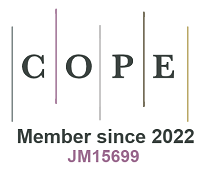Nano shielder of rare-earth metal oxide overlay promotes ultra-stable H2 production on Pt/γ-Mo2N
Keywords
The utilization of highly reactive supports in constructing supported-metal catalysts is a promising choice for achieving efficient heterogeneous catalysis in chemical industries[1], including the H2 production from the methanol-reforming reaction (MRR), the water-gas shift (WGS), etc. Specifically, the support with a high reactivity could promote reactants adsorption-activation by offering additional catalytic sites, and shift the catalysis from a competitive adsorption-activation mechanism over supported-metal catalysts to a non-competitive model owing to the formation of the metal-support interfacial sites[2]. This substantial alteration in catalytic pathways could unlock unparalleled reactivity with a superior catalytic performance[3]. For example, as for Pt/α-MoC proposed by Lin et al. in MRR, the reactive α-MoC support shows high water-dissociation activity, and could produce abundant surface -OH groups for the MRR[4]. In comparison to the common Pt/β-MoC (i.e., a competitive adsorption-activation between methanol and water on the Pt site), Pt/α-MoC has two types of reactive site for the adsorption-activation of methanol and water, respectively (i.e., Pt is for the methanol adsorption/activation, while α-MoC is for the water dissociation). It induces an MRR at the interfacial sites of Pt/α-MoC, offering an average turnover frequency (average TOF, ATOF) of 1.805 × 104 h-1 to the H2 productivity over 0.2 wt% Pt/α-MoC at 150-190 °C.
Beyond achieving superior activity with excellent selectivity, enhancing the durability of a catalyst is one of the most challenging and crucial objectives in catalyst design, especially for supported-metal catalysts with highly reactive support, as the possible metal sintering and reactive support deterioration intensively shorten their lifespan[5,6]. Currently, the problem of metal sintering can be well-solved by introducing a strong metal-support interaction effect that stabilizes metal species on the surface of support[7,8]. However, it is worth noting that the deterioration of reactive support has not been well-resolved. It seriously damages the active metal-support interfacial sites, leading to a reversion from the previously constructed non-competitive mechanism to a competitive adsorption–activation model. For example, highly dispersed Pt on α-MoC and/or γ-Mo2N catalysts are well-known for their exceptional activities in the field of H2 production from low-temperature MRR and WGS reaction, owing to the excellent H2O dissociation activity of α-MoC and γ-Mo2N[4]. However, the methanol conversion over Pt/α-MoC dramatically declines by 62% within 11 h, which is caused by a damage of α-MoC crystal structure from the deep oxidation during water dissociation[4]. It indicates that the protection of vulnerable crystal structure of highly reactivity supports (e.g., α-MoC) is significant. Even though Zhang et al. proposed a strategy of crowding Pt on α-MoC to keep partial H2O reactant away from the surface of α-MoC and obtained improved catalytic stability remaining ~70% in about 260 h of reaction, the deactivation of Pt/α-MoC reveals that such strategy cannot eliminate the decomposition of highly reactive α-MoC support[9]. Therefore, a new strategy that enhances the stability of highly reactive support towards a practical application of such catalysts, while maintaining their superior activity and selectivity, is highly desired, however, with a great challenge and rare exploration.
Recently, Gao et al. filled some of these gaps by proposing a novel and universal strategy, which shields a partial surface of reactive support by constructing an inert nano-overlays that acts as a “nano shielder” to keep the reactive support away from deterioration, without a negative effect on the catalytic activity of metal/support interfaces[10]. The superiority of this new strategy was fully displayed by using an interfacial catalyst of Pt/γ-Mo2N in the H2 production from the probe reaction of MRR, which performs a non-competitive adsorption-activation between water and methanol over Pt/γ-Mo2N [Figure 1A]. In detail, a lanthanum (La) oxide nano-overlay was immobilized on γ-Mo2N by the following procedure: (1) La2O3 and MoO3 are mechanically mixed and calcined in a muffle furnace at 500 °C for 10 h; (2) a nitridation treatment is performed on the obtained sample in NH3 (flow rate: 200 mL·min-1) under a temperature program from room temperature to 350 °C (rate: 10 °C·min-1), then to 450 °C (rate: 0.5 °C·min-1), then to
Figure 1. (A) Schematic diagram of the non-competitive adsorption-activation mechanism in the MRR over Pt/La-Mo2N; (B) Catalytic stability test of the 1Pt/γ-Mo2N and 1Pt/2La-Mo2N catalysts under 200 °C, 5 bar and WHSV of 12.87 h-1[10]; (C) Twice the ratio of H2 production/H2O consumption acquired in H2O TKA experiments at 100 °C and (D) MRR catalytic activity under 250 °C, 10 bar and WHSV of 25.74 h-1 over the γ-Mo2N and 2M-Mo2N (M = La, Pr, Cs and Sr) catalysts[10]. MRR: Methanol-reforming reaction; WHSV: weight-hourly space velocity.
A key finding of this work is the identification of the significant role of rare-earth La oxide nano-overlays that act as a shielder for protecting Pt/γ-Mo2N[10]. They conclude three main functions: (1) partially cover the surface sites of γ-Mo2N and prevent the crystal structure of γ-Mo2N from the deterioration caused by the adsorption of excessive water, without a negative effect on the instinct water dissociation activity of the residual surface sites on γ-Mo2N [Figure 1C]; (2) separate the γ-Mo2N surface into isolated areas that settle the interface between Pt and γ-Mo2N [Figure 1A]; and (3) prevent the platinum aggregation during catalytic reaction. More importantly, the wide suitability of the proposed strategy by constructing “nano shielder” for enhancing the catalytic performance of Pt/γ-Mo2N was also verified by using various catalytically inert elements (i.e., Y, Pr, Ho, Ca, Sr, and Cs). All the catalysts with various of additives (i.e., 1Pt/2Pr-Mo2N, 1Pt/2Sr-Mo2N, 1Pt/2Cs-Mo2N) have a similar H2 production rate as that of 1Pt/2La-Mo2N and 1Pt/γ-Mo2N (~200 μmol·gcat-1·s-1 in Figure 1D). However, they both show a constant H2 production rate (i.e.,
As conclusions and perspectives, Gao et al. innovate a powerful and universal strategy of “nano shielder” for stabilizing the active metal-support interfacial sites in Pt/γ-Mo2N catalyst by introducing rare-earth La oxide overlays, reaching a record-high catalytic activity owing to the substantial alteration in reaction pathways following a non-competitive mechanism model[10]. However, several questions remain open. A key area for further investigation is elucidating the universality of such “nano shielder” in alternative highly reactive supports, other than MoC and Mo2N. Besides that, the metal-support interfacial sites need to be deeply explored, such as (1) the practical dimension of the isolated area segmented by the dispersion of La oxides nano-overlays on γ-Mo2N; (2) no electronic interaction between Pt and La species is simply concluded from the Pt4f XPS analysis, exploration on the state Pt in Pt/La-Mo2N (e.g., the X-ray absorption spectroscopy, CO-DRIFT), and on the mechanism of such no electronic interaction behavior on La-Mo2N surface (e.g., selectively electrostatic adsorption of Pt onto Mo2N, rather than La oxides nano-overlays, during impregnation synthesis) may show a great attractive in future study. More interestingly, the proposed non-competitive mechanism model may also be suitable for the catalyst design in catalysis involving multi-molecule reactions, such as butadiene semi-hydrogenation. All these questions are required to be addressed in future studies to set up the way for its further application to design effective and stable heterogeneous catalysts.
DECLARATIONS
Acknowledgments
Wang, Z. acknowledges the Hubei Provincial Department of Education for the “Chutian Scholar” program and the “Wuhan Yingcai” program.
Authors’ contributions
Made contributions to the conception and design of the study: Wang, Z.; Su, B. L.
Data acquisition and administrative, technical, and material support are equally provided by: Hong, Y.; Cheng, B. C.; Liu, S. L.; Wang, Z.
Availability of data and materials
Not applicable.
Financial support and sponsorship
This work was supported by the National Natural Science Foundation of China (Nos. 22293020, 22293022, 21902122), the National Key R&D Program of China (grant 2021YFE0115800), and Natural Science Foundation of Hubei Province (No. 20221j0082). The Youth Innovation Research Foundation of the State Key Laboratory of Advanced Technology for Material Synthesis and Processing.
Conflicts of interest
Su, B. L. is Editor in Chief of the journal Chemical Synthesis. Su, B. L. was not involved in any steps of editorial processing, notably including reviewers’ selection, manuscript handling, or decision-making. The other authors declare that there are no conflicts of interest.
Ethical approval and consent to participate
Not applicable.
Consent for publication
Not applicable.
Copyright
© The Author(s) 2025.
REFERENCES
1. Ye, T. N.; Park, S. W.; Lu, Y.; et al. Vacancy-enabled N2 activation for ammonia synthesis on an Ni-loaded catalyst. Nature 2020, 583, 391-5.
2. van Deelen, T. W.; Hernández Mejía, C.; de Jong, K. P. Control of metal-support interactions in heterogeneous catalysts to enhance activity and selectivity. Nat. Catal. 2019, 2, 955-70.
3. Liang, X.; Jin, X.; Yu, S.; et al. CO-resistant hydrogenation over noble metal/α-MoC catalyst. Nat. Commun. 2025, 16, 4159.
4. Lin, L.; Zhou, W.; Gao, R.; et al. Low-temperature hydrogen production from water and methanol using Pt/α-MoC catalysts. Nature 2017, 544, 80-3.
5. Wang, Z.; Yuan, H.; Tao, J.; et al. Trace of atomically dispersed Pd enables unprecedented butadiene semihydrogenation performance over copper catalyst. ACS. Catal. 2025, 15, 3810-22.
6. Martín, A. J.; Mitchell, S.; Mondelli, C.; Jaydev, S.; Pérez-Ramírez, J. Unifying views on catalyst deactivation. Nat. Catal. 2022, 5, 854-66.
7. Li, Y.; Liu, C.; Su, Y.; Zhao, Y.; Qiao, B. Maximized Ir atom utilization via downsizing active sites to single-atom scale for highly stable dry reforming of methane. Chem. Synth. 2025, 5, 8.
8. Jones, J.; Xiong, H.; DeLaRiva, A. T.; et al. Thermally stable single-atom platinum-on-ceria catalysts via atom trapping. Science 2016, 353, 150-4.
9. Zhang, X.; Zhang, M.; Deng, Y.; et al. A stable low-temperature H2-production catalyst by crowding Pt on α-MoC. Nature 2021, 589, 396-401.
Cite This Article
How to Cite
Download Citation
Export Citation File:
Type of Import
Tips on Downloading Citation
Citation Manager File Format
Type of Import
Direct Import: When the Direct Import option is selected (the default state), a dialogue box will give you the option to Save or Open the downloaded citation data. Choosing Open will either launch your citation manager or give you a choice of applications with which to use the metadata. The Save option saves the file locally for later use.
Indirect Import: When the Indirect Import option is selected, the metadata is displayed and may be copied and pasted as needed.
About This Article
Copyright
Data & Comments
Data



















Comments
Comments must be written in English. Spam, offensive content, impersonation, and private information will not be permitted. If any comment is reported and identified as inappropriate content by OAE staff, the comment will be removed without notice. If you have any queries or need any help, please contact us at [email protected].